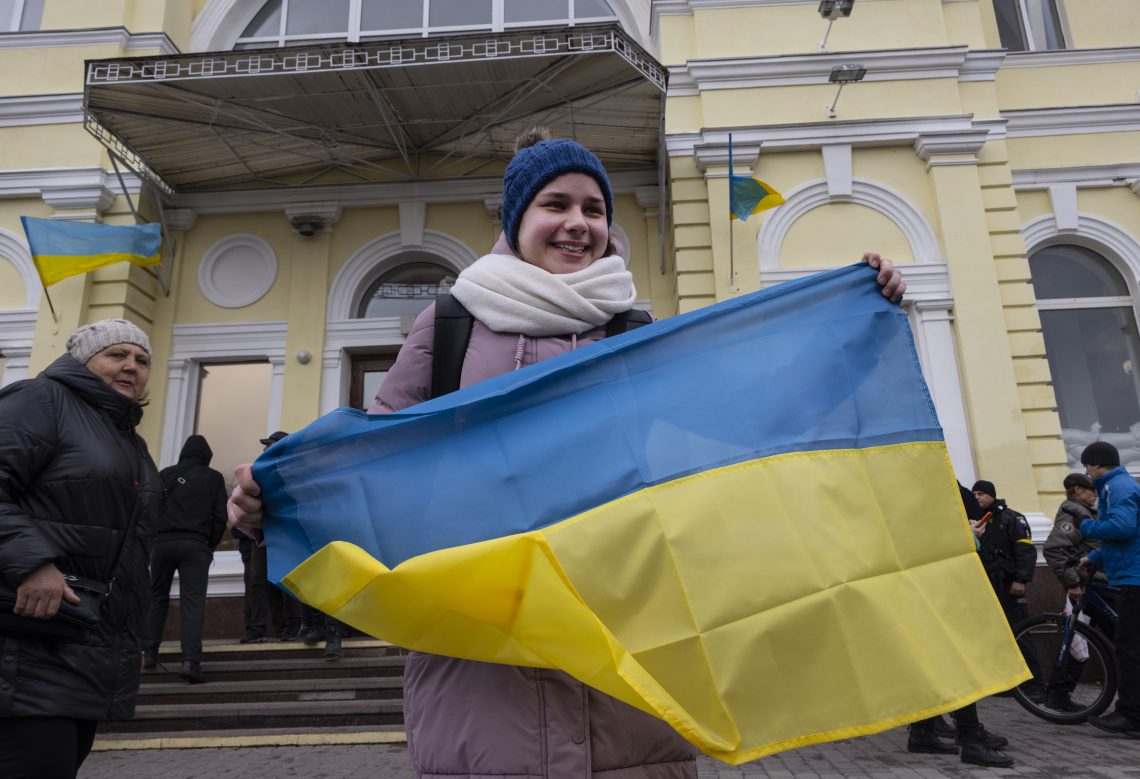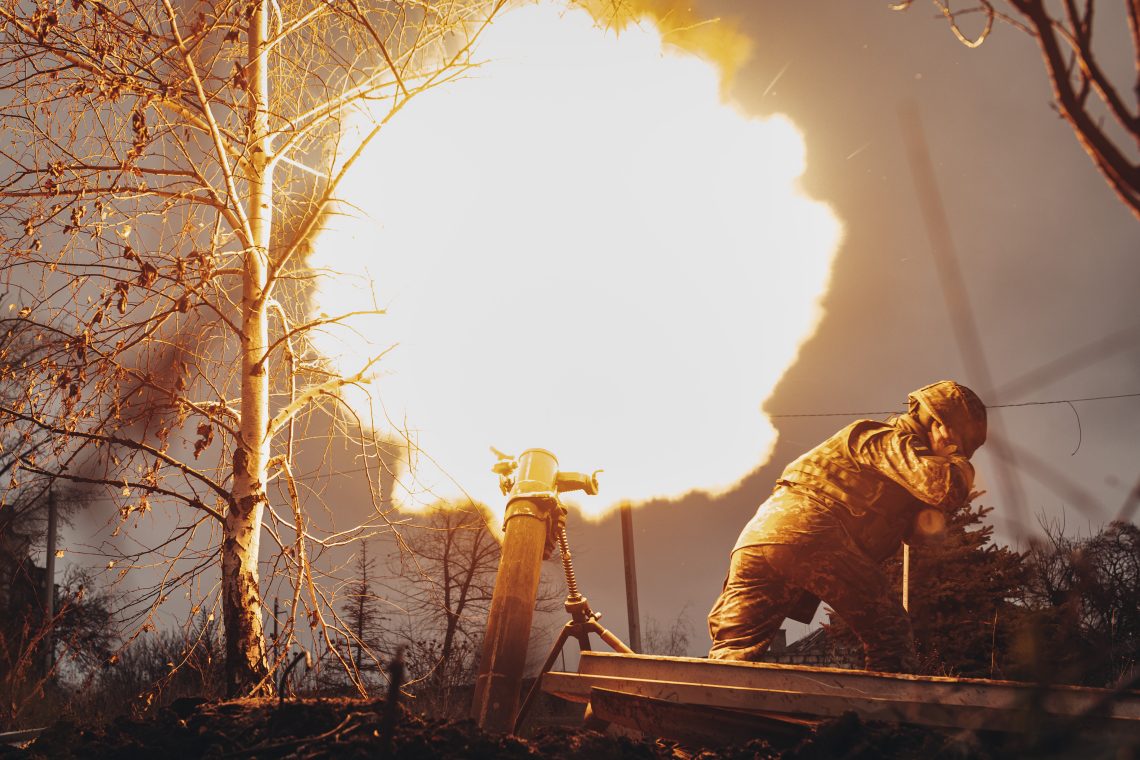Ensuring Ukraine’s postwar security
Deterring Russian aggression and guaranteeing Ukrainian security will require either NATO membership or a long-term, Western-backed military buildup for Kyiv.

In a nutshell
- Ukraine’s postwar recovery will not succeed without security
- The best guarantee is for Kyiv to become a member of NATO
- Absent NATO membership, Ukraine needs a stronger military
When Russia launched its full-scale invasion, Ukraine was one of the poorest and most corrupt countries in Europe, a distinction it shared with Moldova. The destruction wrought by the Russian onslaught caused the situation to deteriorate considerably. A decline in the gross domestic product (GDP) by at least a third may be in the cards for 2022. And the share of the population living in poverty is expected to double over the coming year.
While depressing, there are also grounds to believe that once the war is over, Ukraine may be looking at a bright future.
The main challenge to be solved is providing Ukraine with security guarantees that Russia will not resume hostilities. Without security, even a sizable recovery program – or new “Marshall Plan” – will not work because foreign investors will be fearful of making major commitments. Governments could also see their investment in recovery go for naught if Russia launches a renewed war.
Why brighter days are ahead
One reason to be upbeat is that foreign support for economic reconstruction will likely be robust. While the Western democracies have been profoundly divided in their views on how to provide military support, they will find it easier to come together on a “Marshall Plan” for Ukraine, as suggested by leaders as diverse as former British Prime Minister Boris Johnson and current German Chancellor Olaf Scholz.
Even more important than outside support is the Ukrainian people’s determination that their country will prevail. Faced with an existential crisis, civil society has shown admirable resilience. The Russian invasion has arguably unified Ukrainians more than ever. Ukraine’s national identity has been consolidated and that will surely carry its people forward.
Other positive signs include the fact that the war seems to have lessened corruption. A deep sense of patriotism has taken hold, dissuading antisocial behavior. Corruption still exists, as it does everywhere, but there are signs that Ukraine is starting to combat it. The unity forged in surviving as a nation is likely to lead to tough anti-corruption measures after the war and strong institutions, both lacking in Ukraine throughout its independent history. Foreign assistance programs need to be crafted in ways that keep them safe from predatory elites.
The most recent manifestation of how civil society will grapple with the mammoth task of postwar reconstruction lies in the proposed formation of an “Army of Restoration” that will involve the unemployed in public works. As refugees return, they will make a big difference in helping rebuild their war-torn country.
NATO now vs. empty promises
The simplest way to solve the security challenge is to offer Ukraine what it wants the most, namely, membership in NATO. Two arguments may be advanced in favor of doing so. One is that at its summit in Bucharest in the spring of 2008, NATO decided that Ukraine and Georgia would eventually become members. The other is that seeking to avoid the humiliation of being defeated by Ukraine alone, Russia has already claimed to be at war with NATO, so fears of Moscow’s escalation are misplaced.
The solution is clear-cut, except in the world of global politics. NATO can accept that while it said Ukraine would become a member, it did not say when this would happen. Russia can claim that although it is already at war with NATO in Ukraine, allowing Ukraine to join NATO will trigger a real war with NATO. Logic fails.
Looking beyond the sophistry, the real obstacle to membership for Ukraine lies in the fact that all 30 members would have to agree. The hoped-for accession of Finland and Sweden harbors important lessons. Although both are unanimously viewed as well-suited for membership on purely military grounds, the ratification of their applications is still being held up by Hungary and Turkey, although Budapest says it will accept the two nations as new members.
If NATO is unrealistic and security guarantees are meaningless, the only remaining option is to provide Ukraine with sufficient assistance to provide for its own security, via a robust military buildup.
If NATO were to offer membership to Ukraine, perhaps even stronger opposition would emerge. While some would argue that Ukraine would be a valuable addition, being much more worthy of membership than some of the current members, others would find excuses why this would not be a good idea. Yet given what Ukraine is doing to earn membership, a compelling case can be made that the time has come for action after nearly 15 years. Holding up the vision of NATO membership at some unspecified future point in time is no longer a morale boost and certainly not a credible insurance policy against renewed Russian aggression.
The alternative – denying Ukraine NATO membership but providing security guarantees – is a false promise. This is a knee-jerk response to countries whose security nobody is willing to provide. It caters exclusively to domestic audiences in countries that have no intention of confronting Russian aggression with hard power. It has been especially prominent in rhetoric from Germany, which has no intention of going to war for Ukraine.

Budapest betrayals
Whenever mention is made of security guarantees, Ukraine is justified in referring to the infamous 1994 Budapest Memorandum. In return for surrendering their Soviet-era nuclear weapons to Russia, Ukraine, Belarus and Kazakhstan received security assurances from the three main nuclear powers – Russia, the United States and the United Kingdom. Those guarantees were worthless when Russia launched its initial invasion in 2014, seizing the Crimean Peninsula and part of eastern Donbas in Ukraine.
The core problem with security guarantees is that they are credible only if the guarantors view it as a vital national interest to uphold their promises. And it is very difficult to see key European powers honoring pledges to defend Ukraine as vital to their national interests.
Arming Ukraine
If NATO is unrealistic and security guarantees are meaningless, the only remaining option is to provide Ukraine with sufficient assistance to provide for its own security, via a robust military buildup.
This would require Western democracies to provide ample financing on top of the massive funds needed for civilian reconstruction. They would also have to allow their military industries to provide cutting-edge equipment, a departure from the bulk of the hardware provided in the current war, where Soviet-era and other leftovers are still used on the battlefield.
A partial solution will be an unsatisfactory one for the future and investors.
A cursory overview shows that Ukraine’s armed forces would need enough main battle tanks to deter another Russian land invasion. They would need the Abrams or the Leopard, and infantry fighting vehicles like the Bradley, to set up modern armored and mechanized ground forces. Ukraine would also need missile-carrying naval assets, including anti-submarine warfare capabilities, that can protect the Black Sea shoreline, including the transport lanes that are vital for grain and metals exports. To protect its skies and to prevent the shelling of its cities and critical infrastructure, it would need not only sophisticated air defenses, which are provided although not in sufficient quantities but also long-distance missiles and modern combat jets like the F-16 or the F-15.
Scenarios
To what extent these prescriptions are realistic will depend on what happens over the coming months. Two fundamentally different scenarios are possible.
One is that Ukraine receives a boost in military support that is sufficient for it to liberate all its territory, within the internationally recognized borders that were established in 1992. This outcome would be a powerful deterrent. If the Kremlin were forced to conclude that its war against Ukraine had ended with massive losses and zero gain, it would think twice about a repeat performance.
Even more important is that a conclusive expulsion of Russia would embolden some of the Western democracies in taking steps to build a powerful Ukrainian military. Backed by other frontline states, and by the U.S. and the UK in the rear, Ukraine would develop into a formidable bastion against further Russian aggression. The deterrence would be enhanced by the fact that Ukraine would be free to strike at targets deep inside Russia that are used to launch missiles.
The main problem with this scenario is that the creation of a sufficiently robust Ukrainian defense force would call into question the continued role of NATO.
Based on its current priorities for boosted defense spending, and its massive military shopping spree, Poland will emerge as the leading European military power. On its side, it will have the three Baltic states, as well as the Czech Republic and Slovakia, all of which have been strongly supportive of Ukraine. If Ukraine is integrated into this powerhouse, it will make the question of formal membership in NATO a moot point.
This development would reduce the role of France and Germany. The German government is already backpedaling on its valiant vision – expressed in the “Zeitenwende” – of boosting the capabilities of the Bundeswehr. Given that Paris and Berlin have strong incentives to work against shifting NATO’s focus toward Poland and Ukraine, the prospects for a conclusive end to the war are diminished.
The alternative scenario is an inconclusive end, where Russia retains substantial parts of the currently occupied territories, not only Crimea. This would be deeply demoralizing for Ukraine, undermining the status of President Volodymyr Zelenskiy and his government. It would boost Russia, breathing new life into its hardliners, and it would divide the West, setting the stage for a rerun of the endless Franco-German talk shows that followed in the wake of the 2014 invasion.
An immediate consequence of allowing Russia to remain in control of Crimea would be that the Kremlin would retain its ability to throttle Ukrainian exports, including its vital exports of grain. If the main European powers fail to step up their support for Ukraine, it will also deepen already mounting American resentment about the unequal burden sharing between the U.S. and Europe. This will be an added boost for Russia.
A particular downside would be the weakening of Western resolve in preventing Russia from rearming. Sanctions are always in danger of being undermined by evasion and the ones against Russia are already leaky. Ukrainians have come across debris from cruise missiles that are marked as manufactured in the second quarter of this year. This suggests a growing likelihood that Russia will succeed in rebuilding its military and be able to launch vigorous attacks aimed at destroying Ukraine.
The future of Ukraine will be determined largely by how foreign investors assess the risks and prospects of committing to what could be a very bright future. Those decisions will be formulated over the coming months. Based on recent developments, the likely outcome is a strong military buildup in Ukraine. But it remains doubtful whether Europe will support Ukraine’s ambition to liberate its country from Russian occupation completely. A partial solution will be an unsatisfactory one for the future and investors because they will need to factor in the danger of a renewed Russian invasion that could torment Ukrainians and the world order for years to come.







